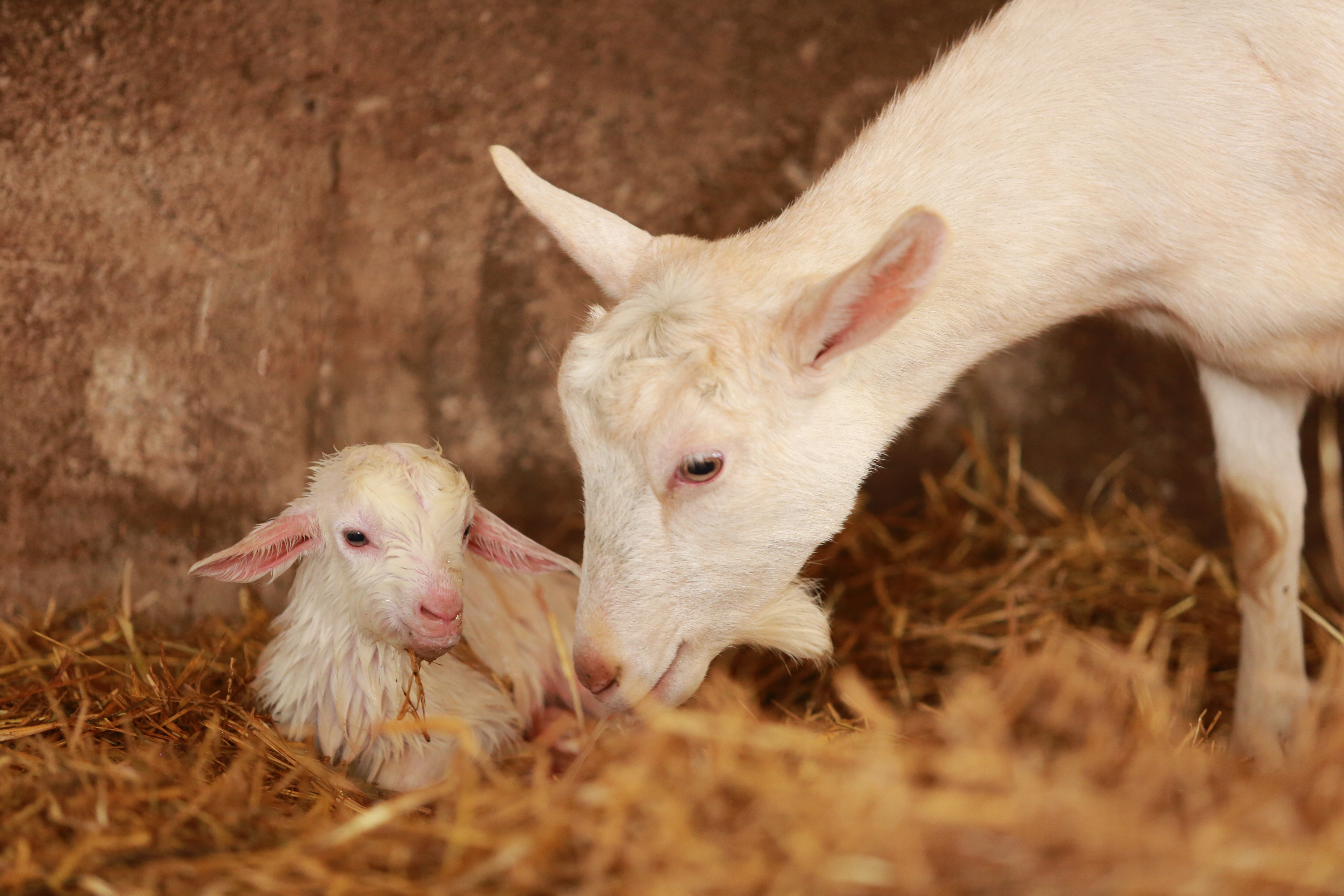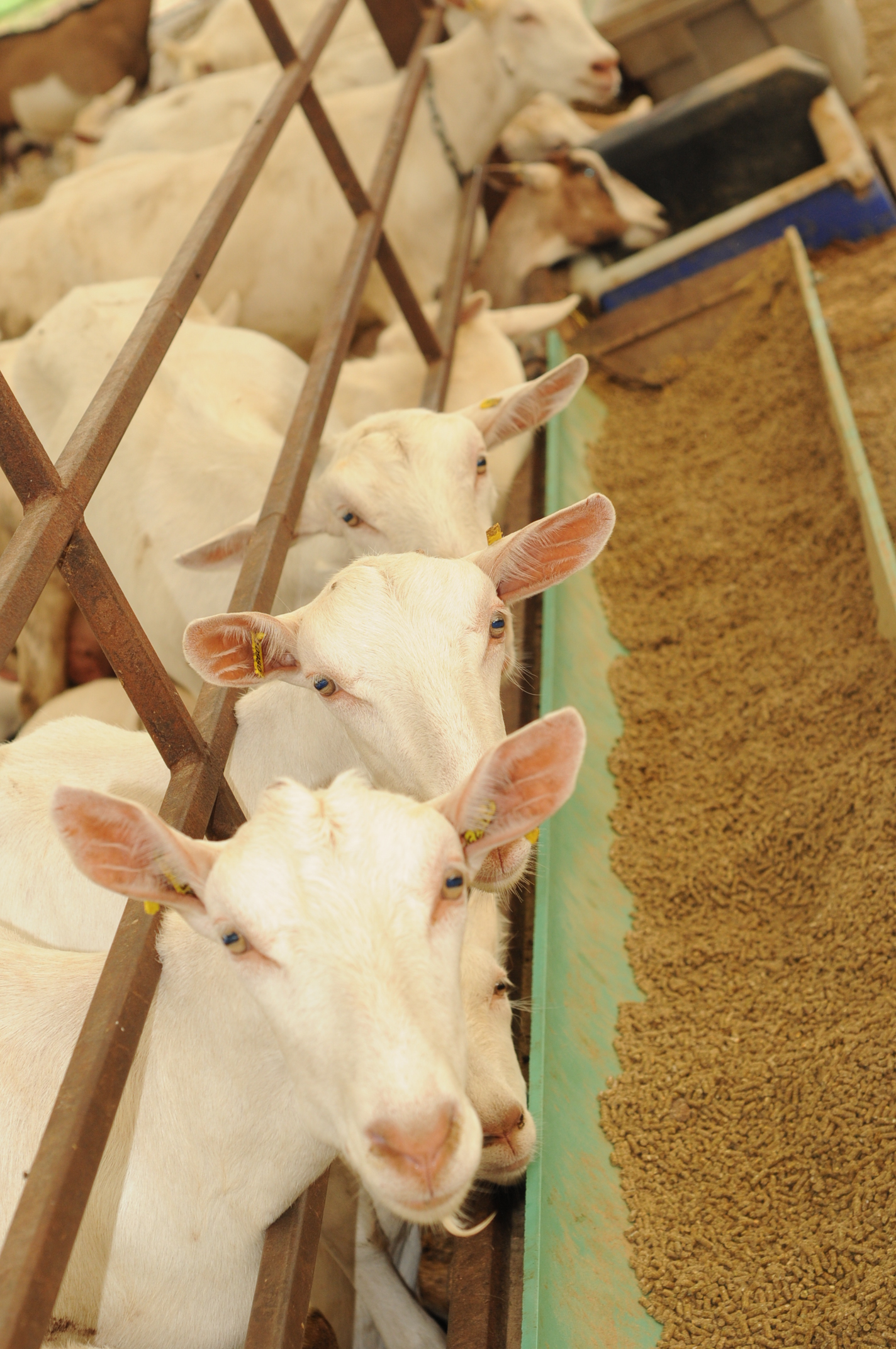Once a doe kids, there are many things to do, and timing is critical. Dairy operations generally move kids to a nursery area and collect and feed colostrum while meat goat operations typically check to see if the kids are suckling and the dam is bonding with them. Additional newborn care such as navel dipping, injections of selenium and vitamin E, tagging, and ensuring kids are dry and able to stand is standard on most operations.

While these practices are essential to caring for newborn kids, it can be easy to forget the doe is at risk of developing health challenges and should be closely monitored to ensure a successful transition from pregnancy to lactation.
Retained placenta and metritis (uterine infection), mastitis, and ketosis are some common post-kidding health issues that producers should be aware of when assessing fresh doe health.
Retained placenta and Metritis
The placenta is typically passed three to four hours after the delivery of the last kid. If the placenta has not passed within 12 hours, it is considered retained. The placenta may be retained for a variety of reasons, which can include infectious disease or nutritional deficiency. If retained placentas occur in your herd, contact your herd veterinarian to investigate the cause. The placenta should never be pulled.
Metritis is an infection of the uterus, which may occur alongside a retained placenta, a difficult birth, or as assisted birth – anything that allows bacteria to enter the uterus. Shortly after kidding, the doe may have systemic signs such as fever, depression, refusal to eat, and a foul-smelling vaginal discharge.
Does with metritis need to be treated quickly, as life-threatening toxemia or septicemia can occur. Work with your herd veterinarian to develop a protocol to diagnose and treat does with a retained placenta and/or metritis.
Mastitis
Checking fresh does for mastitis is no different from checking any lactating doe for this common production-limiting ailment. Signs of mastitis include heat, tenderness, redness, and swelling of the udder in one or both halves. If a goat has an asymmetrical udder, this may mean that one side is either swollen or has reduced milk production – both signs of mastitis in that half. Milk from a doe with mastitis may be watery, red/pink, clotted, or have flakes.
A California Mastitis Test (CMT) is a simple test that can be performed on-farm to assess mastitis almost instantly. The CMT test can indicate a doe has mastitis before symptoms such as abnormal milk are present. Testing involves milking a small milk sample from each udder half onto a paddle and adding a CMT reagent. If the milk thickens or gels, that udder half is positive for mastitis.
To learn more about mastitis and mastitis testing, see “A Guide to Udder Health For Dairy Goats,” a comprehensive manual distributed free of charge to all licensed dairy goat producers by Ontario Goat. This manual and advice from your herd veterinarian can help you control mastitis in all does on your farm.
Ketosis
Ketosis is a metabolic condition that occurs during early lactation. Pregnancy toxemia is a similar condition but occurs during late gestation. A study on Ontario dairy goat farms in 2015 found that four percent of does in the study had pregnancy toxemia, and 14 percent of does had ketosis.
Ketosis occurs because milk production requires a high level of nutrients but does cannot eat enough to meet this demand. Therefore, does start utilizing their body fat reserves. This is a normal process, and using some body fat reserves in late pregnancy or early lactation is normal. The process of breaking down fat creates ketones. When the level of ketones in a doe’s body is too high (due to breaking down too much fat too quickly), the doe can become ketotic.
Does with ketosis will generally lose their appetite and have decreased milk production. Some people can smell the sweet odour of ketones on the breath of does with ketosis. If no one on your farm has this ability, testing can be done using a blood or urine sample. Commercially available ketosis testing strips or powder that measure ketone levels in urine, blood, or milk can be used. Blood serum tests can also be done using meters intended for use for human diabetes.
Work with your veterinarian to develop a testing protocol which can be used for pregnancy toxemia and ketosis. Does above or below the ideal body condition score (see Ontario Goat’s “Body condition scoring in goats” resource) in late pregnancy or early lactation are most at risk for these conditions. Working with a qualified dairy goat nutritionist is essential to ensure diets are supporting doe health and helping smooth the transition from late pregnancy to early lactation.
Fresh doe checklist
Working with your herd veterinarian to create a list of health indicators to check each time a doe kids can help prevent small problems from going unnoticed and turning into major health challenges. Determine a normal range for your herd and decide what levels warrant further investigation or treatment.
- Attitude
- The doe should be responsive to your approach, get up when feed is delivered, and interact with other does (or her kids, if applicable).
- Appetite
- Check the doe is eating both concentrates and forage
- Rectal temperature
- Normal temperature is 38.5–39.7°C (101.3–103.5°F)
- Ketones
- Compare to thresholds set by your herd veterinarian
- Vaginal discharge
- Placenta is passed within three to four hours of last kid’s birth
- Some clear or bloody discharge is normal for up to three weeks post kidding
- Foul-smelling discharge is cause for concern
- Milk production
- Compare milk quality and production from day to day and note any changes
- Other notes such as drinking, manure, and treatments given should also be recorded
Do you have a thermometer that is cleaned between uses and easy to find? Does everyone working with your goats know what a normal temperature is? Tip: write normal temperature ranges on the thermometer!
Summary
By performing a simple health check immediately post-kidding and keeping a close eye on does as they begin lactation, producers can identify health challenges as soon as possible and take steps to prevent reduced doe productivity and welfare. Work with your herd veterinarian and nutritionist to develop protocols for the care of all transition does, and diagnostic and treatment protocols for does that need a little help to make the transition from pregnancy to productive lactation smoothly.
